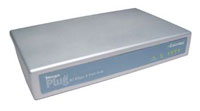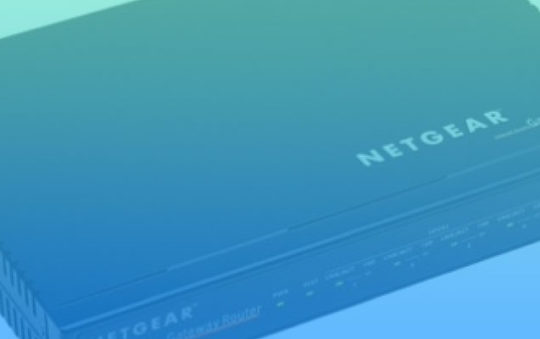Author: Gerry Blackwell
Review Date: 3/13/2006

There was a time a few years ago when Wi-Fi, the now-ubiquitous wireless local area networking standard, was not the only option available to home owners and small businesses looking for a simple way to link computers and share high-speed Internet service. HomePlug, a technology for running Ethernet networking over existing, on-site electrical lines, was a strong alternative. Then Wi-Fi prices fell, wireless technology caught fire, and HomePlug slipped from view.
The technology never entirely disappeared, though, and now it’s making a comeback. Products based on a new generation HomePlug standard that supports network speeds up to 85 megabits per second (Mbps) — faster than the 54 Mbps offered by Wi-Fi 11g gear — have begun to appear. They won’t supplant Wi-Fi, but there are times and places where HomePlug could be useful.
MegaPlug
We tested the 85 Mbps MegaPlug Ethernet Adapter ($60) and 4-Port Hub ($90) from Actiontec Electronics. The company has a MegaPlug Wireless Network Extender ($100) as well. Netgear and a few other vendors also sell 85 Mbps Ethernet over power line equipment.
One advantage HomePlug has over Wi-Fi is its easier set up and its simpler, more intuitive operation. You plug the small transformer-sized MegaPlug Ethernet Adapter into an electrical outlet and attach the included Ethernet cable to an existing network router or PC. You’ll need one adapter for each device in the network. Once you install the MegaPlug software on each of the PCs, the HomePlug technology finds a path through the maze of wiring in your home or office building — even passing through breaker panels — and creates the network connections.
This is always assuming the wiring in your walls isn’t too ancient. You’ll know it’s working if the two lights on each MegaPlug unit light up.
Applications
It’s possible to set up a home- or small-office network using only MegaPlus gear, but the technology will more likely find a niche as a complement or supplement to wireless. Wi-Fi is actually less expensive right now and offers much greater flexibility. You can roam around an office with a Wi-Fi-enabled laptop, something you cannot easily do with HomePlug since you have to be near an electrical outlet, and the cable limits movement. In most cases, there is no reason not to go with Wi-Fi.
But wireless sometimes doesn’t work well — or at all — in parts of a building because of interference from microwave ovens or nearby wireless equipment (cordless phones, for example) or because of physical obstructions.
Now you can connect a PC that’s stuck in a wireless dead spot by plugging it into one of the MegaPlug adapters and plugging another adapter into your wireless router. Or you could plug in the 4-Port Hub in the room with poor wireless coverage and connect up to four devices to the network by running Ethernet cables from them to the hub.
The MegaPlug Wireless Network Extender, which we were not able to test, offers a better solution for situations where wireless works in an area, but it’s too far from the router to get a strong signal. Plug a MegaPlug adapter into the router and plug in a wireless extender in the area with poor wireless coverage. All the wireless devices close to it will get a strong signal from the extender and traffic will be carried to and from the router over building wiring instead of over the air.
This is all theory so far. How do the MegaPlug products actually perform?
Performance
Installing the hardware and software is as simple as it sounds. We were up and running within 20 minutes. But it’s clear performance and proper operation are very much dependent on the wiring in your walls and also, somewhat surprisingly, the distance the signal has to travel.
We tested the MegaPlug products first in a home-office setting. The Actiontec literature warns that the technology may not work in homes built before 1950, and our test home was built in 1953. MegaPlug worked well in some rooms, not at all in others and so slowly in one room that it was all but useless. We later tested the same equipment in a 20-year-old house, where it worked reasonably well everywhere. However, transmission speeds were markedly different the further apart two test PCs were placed from each other.
MegaPlug Versus Wi-Fi
In the home-office tests, we started by comparing Wi-Fi and MegaPlug performance. I plugged one MegaPlug adapter into a Buffalo Technology Wi-Fi 11g (54 Mbps) router, the other into a laptop that we carried around the house. To test MegaPlus network speed, we first disabled the wireless network on the laptop, then copied a group of image files from the laptop to our main system, which is connected to the router by Ethernet cable. Next we disabled the MegaPlug network connection, re-enabled Wi-Fi and sent the same group of files over the wireless network.
In a room next door to the office where the router sits, it took almost exactly the same time to move the files wirelessly and over home wiring — 32 seconds for MegaPlug and 33 seconds for Wi-Fi. In a second ground-floor office, where the Wi-Fi signal is weak, it took one minute and 38 seconds to send the files wirelessly. HomePlug would have been useful in that room, but it didn’t work at all; the wiring there is probably original. The outlets are dual-prong rather than the more modern three-prong outlets elsewhere in the house.
In most of the downstairs, HomePlug also didn’t work at all. We were able to make a connection in one lower-level room, but the signal was so weak that it took several minutes to send the test transmission. Wireless was significantly faster.
In this 20-year-old home does not have a wireless network. We set up two laptops in a peer-to-peer network using the MegaPlug adapters. With the two computers in one room about 15 feet apart, the test transmission took 14 seconds. When we took one of the laptops upstairs and plugged it in about 30 feet from the other, transmission time went up to 19 seconds. And when we moved the two laptops about 50 feet apart, the test transmission took 22 seconds. The distances are approximate and “as the crow flies” — there’s no way of knowing how many feet of home wiring the transmissions actually went over.
Network Speed
It’s worth noting that no network delivers throughput equal to its maximum quoted speed in such tests — in this case 85 Mbps. Or even close. How fast were the files being sent in my real-world MegaPlug tests?
The group of files used in the second test in the 20-year-old home totaled 16.5 megabytes (MB). Network speeds are measured in megabits per second. There are approximately eight bits per byte — so 132 megabits in this transmission. Actual network throughput then ranged from to six to 9.5 Mbps. In the first set of tests— in which Wi-Fi and HomePlug ran neck and neck (where it was possible to compare apples to apples) — the transmissions were 45 MB. So the fastest we saw was 11.5 Mbps.
It seems reasonable to conclude that the MegaPlug products will work reasonably well in most buildings with wiring newer than, say, 40 years old. Throughput is a little disappointing, but appears to be comparable with Wi-Fi, at least over short distances. On the plus side, speeds do not fall off as rapidly as they typically do with Wi-Fi where the impacts of interference are more noticeable over greater distances.
Bottom Line
If you have a wireless network but it has dead spots or slow spots, try the MegaPlug products. You may be able to boost throughput in those areas. If you’re setting up a new network, though, go with Wi-Fi first.
Article appeared originally on SmallBusinessComputing.com.



